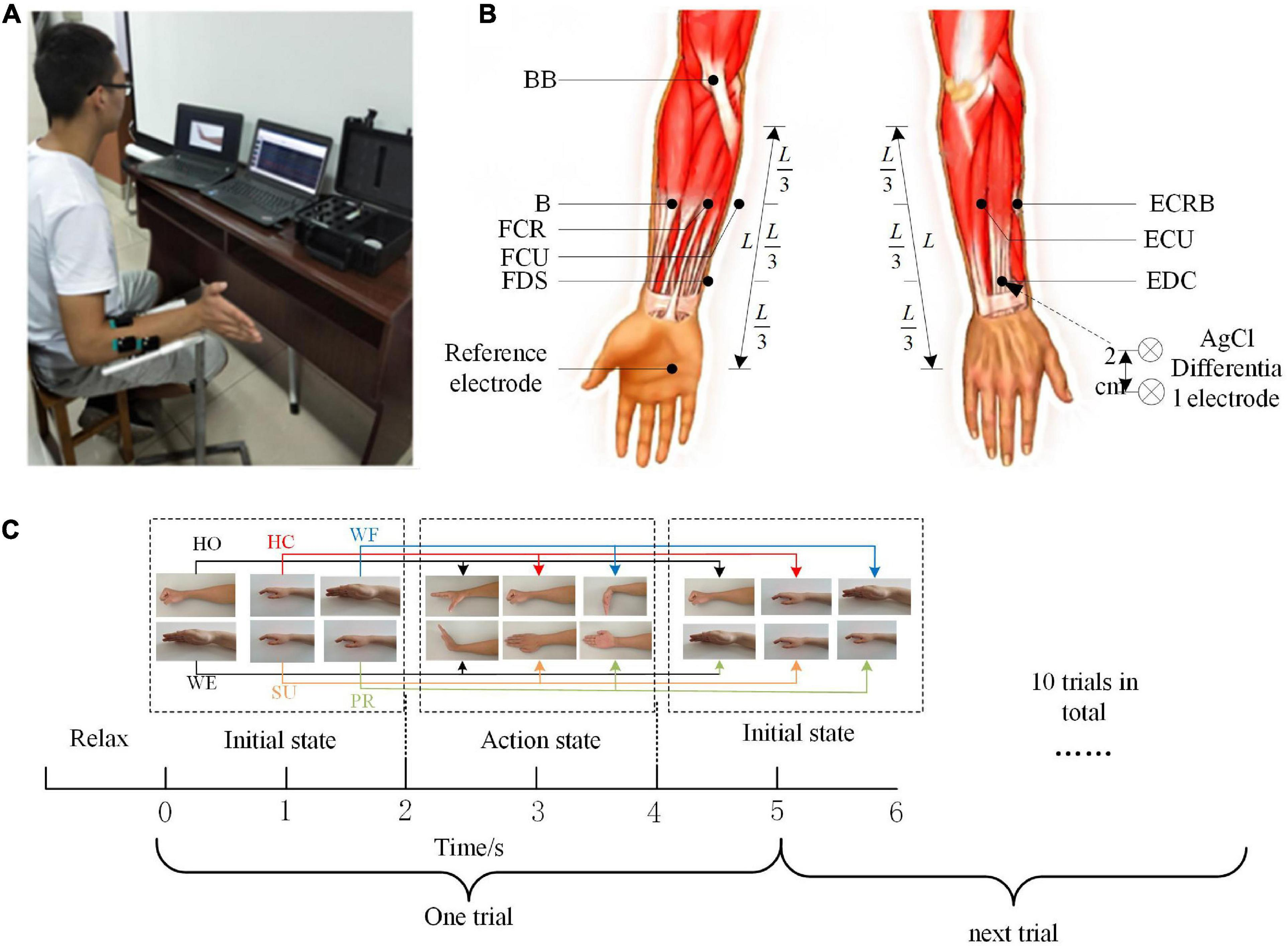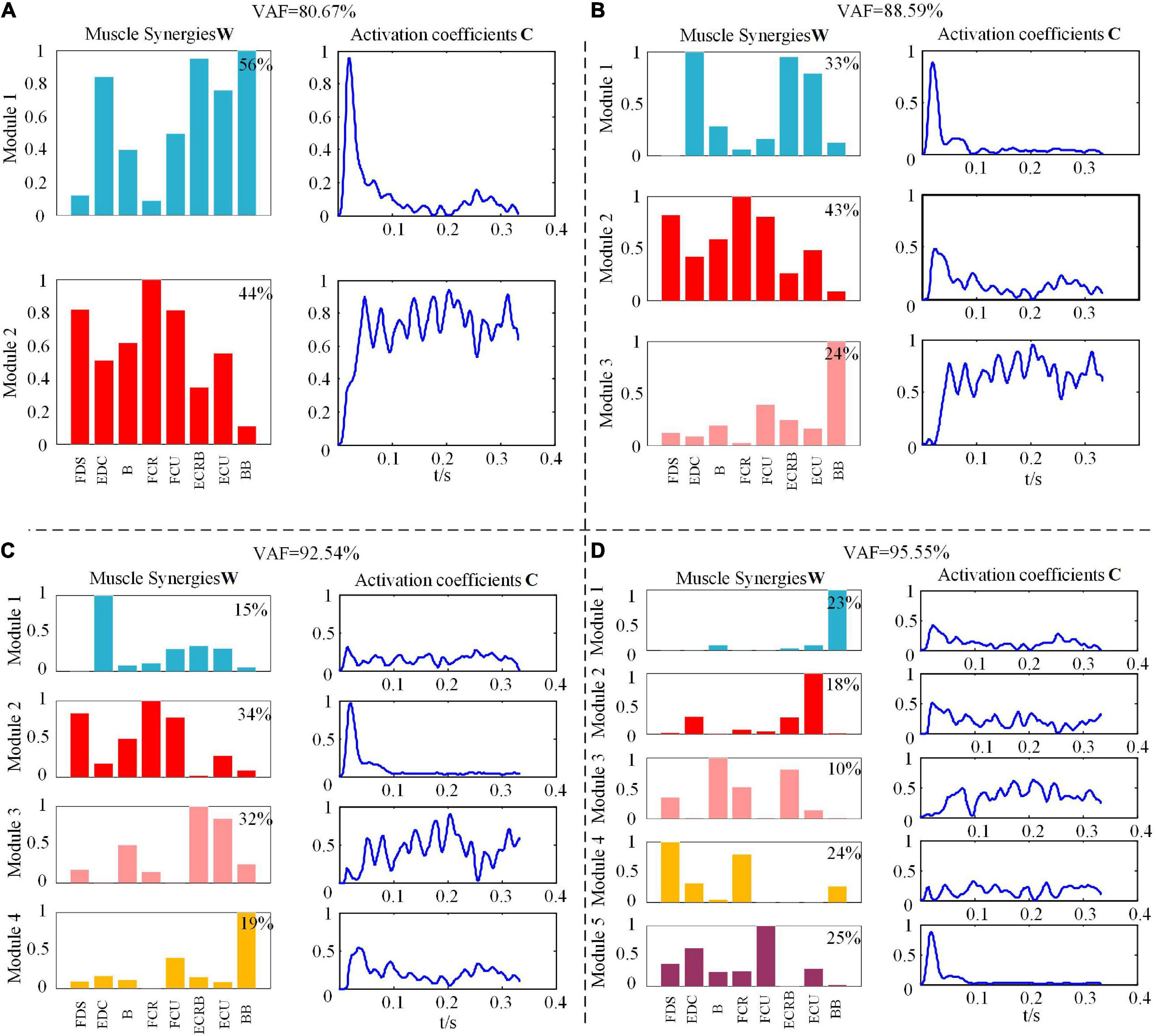


Xiaoling Chen, Xiaojiao Dong, Yange Feng, Yuntao Jiao, Jian Yu, Yan Song, Xinxin Li, Lijie Zhang, Peiguo Hou, Ping Xie
A core issue in motor control is how the central nervous system generates and selects the muscle activation patterns necessary to achieve a variety of behaviors and movements. Extensive studies have verified that it is the foundation to induce a complex movement by the modular combinations of several muscles with a synergetic relationship. However, a few studies focus on the synergetic similarity and dissimilarity among different types of movements, especially for the upper extremity movements. In this study, we introduced the non-negative matrix factorization (NMF) method to explore the muscle activation patterns and synergy structure under 6 types of movements, involving the hand open (HO), hand close (HC), wrist flexion (WF), wrist extension (WE), supination (SU), and pronation (PR). For this, we enrolled 10 healthy subjects to record the electromyography signal for NMF calculation. The results showed a highly modular similarity of the muscle synergy among subjects under the same movement. Furthermore, Spearman's correlation analysis indicated significant similarities among HO-WE, HO-SU, and WE-SU (p < 0.001). Additionally, we also found shared synergy and special synergy in activation patterns among different movements. This study confirmed the theory of modular structure in the central nervous system, which yields a stable synergetic pattern under the same movement. Our findings on muscle synergy will be of great significance to motor control and even to clinical assessment techniques.
运动控制的一个核心问题是,中枢神经系统如何产生和选择实现各种行为和动作所需的肌肉激活模式。大量研究已经证实,通过具有协同关系的几块肌肉的模块化组合,是诱发复杂运动的基础。然而,很少有研究关注不同类型动作之间的协同异同,尤其是上肢动作。在本研究中,我们引入了非负矩阵因式分解(NMF)方法来探讨6种运动下的肌肉激活模式和协同结构,包括手张开(HO)、手合拢(HC)、腕关节屈曲(WF)、腕关节伸展(WE)、上举(SU)和前倾(PR)。为此,我们招募了 10 名健康受试者记录肌电信号以计算 NMF。结果表明,在相同动作下,受试者之间的肌肉协同具有高度的模块相似性。此外,斯皮尔曼相关分析表明,HO-WE、HO-SU 和 WE-SU 之间存在显著的相似性(p < 0.001)。此外,我们还发现了不同动作间激活模式的共享协同作用和特殊协同作用。这项研究证实了中枢神经系统的模块化结构理论,即在同一动作下产生稳定的协同模式。我们关于肌肉协同作用的研究结果将对运动控制乃至临床评估技术具有重要意义。